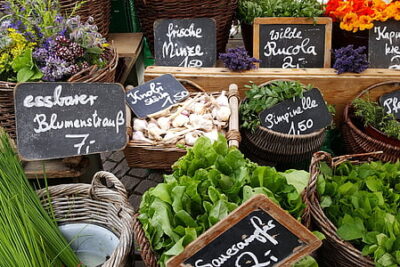
Choosing the Best Pebbles for Succulents: Quality and Drainage Factors

When it comes to growing succulents, choosing the right pebbles for your plant's potting mix is crucial. Pebbles not only add aesthetic appeal to your succulent arrangement, but they also play a vital role in providing proper drainage and preventing root rot. With a wide variety of pebbles available in the market, it can be overwhelming to determine which ones are best suited for your succulents. This article will guide you through the factors to consider when selecting pebbles for your succulents and help you make an informed decision.
We will discuss the importance of using high-quality pebbles for succulents and how they contribute to overall plant health. We will explore the different types of pebbles available and their specific characteristics. Additionally, we will delve into the significance of proper drainage and how different types of pebbles can affect it. By the end of this article, you will have a better understanding of the various factors to consider when choosing pebbles for your succulents, and you will be able to create a healthy and visually appealing environment for your plants.
- Consider the size of the pebbles when choosing the best ones for your succulents
- Look for pebbles that are smooth and rounded to prevent damage to the succulent's delicate roots
- Make sure the pebbles are clean and free of any chemicals or contaminants that could harm the succulents
- Opt for pebbles that have good drainage properties to prevent water from pooling around the roots
- Choose pebbles that are visually appealing and complement the overall aesthetic of your succulent arrangement
- Consider the quality and drainage factors of the pebbles
- Consider the weight of the pebbles, as heavier pebbles may make it difficult to move or reposition your succulents
- Look for pebbles that are readily available and affordable for easy replenishment when needed
- Consider the long-term maintenance of the pebbles and how easily they can be cleaned or replaced if necessary
- Frequently Asked Questions
Consider the size of the pebbles when choosing the best ones for your succulents
When it comes to selecting pebbles for your succulents, size matters. The size of the pebbles can greatly impact the overall health and well-being of your plants.
Small pebbles: Opting for small pebbles is ideal for succulents as they provide better drainage and aeration. These tiny pebbles allow excess water to flow freely, preventing the roots from sitting in water for too long and potentially rotting. They also help in maintaining a well-drained soil environment, which is crucial for succulents to thrive.
Medium pebbles: Medium-sized pebbles can also be suitable for succulents, as they strike a balance between drainage and water retention. They allow water to drain adequately while still retaining some moisture for the plants. If you live in an arid climate or tend to forget to water your plants, medium-sized pebbles can be a good choice.
Large pebbles: While large pebbles may not be the best option for succulents, they can still be used in certain situations. If you have a specific aesthetic in mind and want to create a decorative top layer, large pebbles can add a unique touch to your succulent arrangements. However, it is essential to ensure that the soil beneath the pebbles is well-drained to prevent waterlogging.
 Where to Find Stunning Succulent Garden Pictures: Seeking Inspiration
Where to Find Stunning Succulent Garden Pictures: Seeking InspirationUltimately, the size of the pebbles you choose will depend on various factors such as the type of succulents you have, the climate you live in, and your personal preferences. Experimenting with different sizes can help you find the best pebbles that promote optimal drainage and create a visually appealing display for your succulents.
Look for pebbles that are smooth and rounded to prevent damage to the succulent's delicate roots
When choosing pebbles for your succulents, it's important to consider their quality and drainage factors. One of the first things to look for is pebbles that are smooth and rounded. This is crucial to prevent any damage to the delicate roots of your succulents.
Smooth and rounded pebbles provide a stable environment for your succulents to grow. They create a protective layer that allows air to circulate around the roots and prevents water from accumulating, which can lead to root rot. Additionally, these pebbles help to anchor the succulents in place, preventing them from toppling over.
When examining the pebbles, pay attention to their texture. Avoid any pebbles with sharp edges or rough surfaces, as they can cause harm to the roots when handling or during watering. Smooth pebbles, on the other hand, are gentle on the succulent's roots and minimize the risk of injury.
Furthermore, consider the size of the pebbles. Opt for pebbles that are small to medium in size, with diameters ranging from 1/4 to 1 inch. These sizes are ideal for succulents as they allow for proper drainage while still providing stability. Too large pebbles may hinder drainage, while too small pebbles can easily compact, preventing water from flowing through.
Additionally, it is worth mentioning the color of the pebbles. While this does not directly affect the quality or drainage, it can enhance the overall aesthetic appeal of your succulent arrangement. You can choose pebbles that complement the colors of your succulents or create contrast to make them stand out.
 Top Online Stores for Succulent Delivery: Buy & Deliver to Your Door
Top Online Stores for Succulent Delivery: Buy & Deliver to Your DoorWhen selecting pebbles for your succulents, prioritize smooth and rounded ones to protect their delicate roots. Consider the texture, size, and color of the pebbles to ensure proper drainage and enhance the visual appeal of your succulent arrangement. By choosing the best pebbles, you are providing your succulents with an optimal growing environment.
Make sure the pebbles are clean and free of any chemicals or contaminants that could harm the succulents
When choosing pebbles for your succulents, it is crucial to prioritize their cleanliness and ensure they are free of any chemicals or contaminants that could potentially harm your beloved plants.
Succulents are known for their resilience and ability to thrive in harsh conditions, but they are also sensitive to toxins and pollutants. Therefore, it is essential to select pebbles that are safe and free from any harmful substances.
To ensure the cleanliness of the pebbles, you can either purchase them from a reputable source or clean them yourself before use. If buying from a store or online, make sure to read reviews or inquire about the pebbles' quality and safety measures.
If you decide to clean the pebbles yourself, start by rinsing them thoroughly under running water. This will help remove any dirt, dust, or debris that may be present. Next, soak the pebbles in a solution of water and mild dish soap for a few minutes. Scrub them gently with a soft brush to eliminate any remaining impurities. Finally, rinse the pebbles again to ensure all soap residue is removed.
Note: Avoid using any harsh chemicals or cleaning agents that may leave behind residue or have adverse effects on your succulents' health.
 Step-by-Step Guide: How to Create a Stunning Succulent Terrarium
Step-by-Step Guide: How to Create a Stunning Succulent TerrariumOpt for pebbles that have good drainage properties to prevent water from pooling around the roots
When it comes to choosing the best pebbles for your succulents, it's important to consider their drainage properties. Succulents have shallow root systems that are prone to rot if they are constantly exposed to excess moisture. Therefore, opting for pebbles that have good drainage properties is crucial to prevent water from pooling around the roots.
One way to ensure proper drainage is to choose pebbles that are porous in nature. Porous pebbles allow water to flow through them easily, preventing it from accumulating around the roots. This helps to keep the soil well-drained and prevents the roots from becoming waterlogged.
Another factor to consider is the size of the pebbles. It is generally recommended to choose pebbles that are small in size, as they allow for better water drainage. Larger pebbles may impede water flow and hinder proper drainage, which can lead to root rot.
Additionally, it's important to select pebbles that are of high quality. Look for pebbles that are smooth and free from debris. Rough or jagged pebbles can potentially damage the delicate roots of succulents. Choosing high-quality pebbles ensures that your succulents have a healthy environment to grow and thrive in.
When shopping for pebbles, you may come across various options such as river rocks, lava rocks, or crushed granite. Each type of pebble has its own unique properties, so it's important to consider the specific needs of your succulents. River rocks, for example, are known for their smooth texture and good drainage capabilities. Lava rocks, on the other hand, are highly porous and retain heat, which can be beneficial for succulents that prefer warmer environments.
Choosing the best pebbles for your succulents involves considering their drainage properties and overall quality. Opting for pebbles that are porous and small in size will help prevent water from pooling around the roots, reducing the risk of root rot. Additionally, selecting high-quality pebbles that are smooth and free from debris will provide a healthy environment for your succulents to thrive in. Take the time to research and select the right type of pebbles that suit the specific needs of your succulents, and you'll be rewarded with healthy and vibrant plants.
Choose pebbles that are visually appealing and complement the overall aesthetic of your succulent arrangement
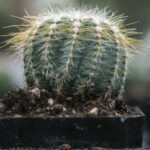 Succulent Pot Pictures: Inspiring and Stunning Designs
Succulent Pot Pictures: Inspiring and Stunning DesignsVisually appealing pebbles
When selecting pebbles for your succulents, it is important to consider their visual appeal. The pebbles you choose should complement the overall aesthetic of your succulent arrangement, enhancing its beauty. Look for pebbles that come in a variety of colors and sizes, allowing you to create a visually interesting display.
Complement the aesthetic
Every succulent arrangement has its own unique aesthetic, whether it's modern and minimalist or vibrant and eclectic. The pebbles you choose should align with this aesthetic, blending seamlessly into the overall design. For example, if your succulent arrangement features succulents with vibrant green leaves, you may want to opt for pebbles in shades of gray or white to create a contrasting effect.
Consider the quality and drainage factors of the pebbles
Quality of the pebbles
Choosing high-quality pebbles is essential for the health and longevity of your succulents. Poor-quality pebbles may contain harmful substances or impurities that can negatively impact the growth of your plants. When purchasing pebbles, look for ones that are sourced from reputable suppliers and have undergone proper cleaning and processing to ensure their quality.
Drainage properties
One of the most important factors to consider when choosing pebbles for succulents is their drainage properties. Succulents thrive in well-draining soil, and using pebbles in the bottom layer of your pot can help facilitate proper drainage. Look for pebbles that are porous and allow excess water to flow through easily, preventing waterlogging and root rot.
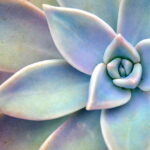 Where to Buy Affordable Succulents: A Guide to Low-Cost Options
Where to Buy Affordable Succulents: A Guide to Low-Cost OptionsSize and texture
The size and texture of the pebbles also play a role in drainage. Opt for pebbles that are small to medium-sized, as larger pebbles can hinder proper water flow. Additionally, consider the texture of the pebbles. Smooth pebbles may be more visually appealing, but they can create a compact layer that restricts drainage. Rougher or irregularly shaped pebbles, on the other hand, provide better aeration and promote healthy root growth.
Choosing the right mix
Lastly, consider creating a mix of pebbles that combines different sizes and textures. This can help create optimal drainage conditions and add visual interest to your succulent arrangement. Experiment with different combinations until you find the mix that works best for your plants and aesthetic preferences.
Consider the weight of the pebbles, as heavier pebbles may make it difficult to move or reposition your succulents
When choosing pebbles for your succulents, it is important to consider their weight. Heavier pebbles can make it challenging to move or reposition your succulents, especially if you like to rearrange your plants frequently or if you plan to create a portable succulent arrangement.
Opting for lighter pebbles will not only make it easier to handle your succulents but also ensure that the overall weight of your planters remains manageable. This is especially crucial if you have large or multiple succulent arrangements, as the weight of the pebbles can quickly add up.
 Find the Perfect Succulent Tool Kit for All Your Gardening Needs
Find the Perfect Succulent Tool Kit for All Your Gardening NeedsAdditionally, choosing lighter pebbles allows for more flexibility in terms of arranging your succulents. You can easily experiment with different compositions and designs without worrying about the weight of the pebbles limiting your options.
Overall, it is advisable to select pebbles that strike a balance between providing sufficient stability for your succulents and being lightweight enough to allow for easy movement and rearrangement.
Key takeaway: When choosing pebbles for your succulents, consider their weight to ensure easy movement and rearrangement of your plants.
Look for pebbles that are readily available and affordable for easy replenishment when needed
Consider the availability and affordability
When selecting pebbles for your succulents, it is important to choose ones that are readily available and affordable. This ensures easy replenishment when needed and avoids any inconvenience of searching for specific types of pebbles.
It is recommended to opt for pebbles that are commonly found in local garden centers or online stores. This way, you can easily restock your supply whenever required.
Additionally, it is wise to consider your budget. Look for pebbles that are affordable and do not exceed your allocated spending limit. This allows you to create a beautiful succulent arrangement without breaking the bank.
 DIY Succulent Wreaths: Create Stunning Decorative Wreaths at Home
DIY Succulent Wreaths: Create Stunning Decorative Wreaths at HomeAssess the quality of the pebbles
Quality is a crucial factor to consider when choosing pebbles for your succulents. Poor quality pebbles can negatively impact the health and growth of your plants.
One way to assess the quality of pebbles is by checking their texture. Ensure that the pebbles are smooth and free from sharp edges. Rough pebbles can damage the delicate roots of succulents and hinder their growth.
Another aspect to consider is the color of the pebbles. Opt for pebbles that complement the color scheme of your succulents and enhance the overall visual appeal of your arrangement.
Furthermore, it is important to choose pebbles that are durable and do not disintegrate easily. This ensures that they will maintain their structure and provide adequate drainage for your succulents.
Focus on drainage capabilities
Drainage is a critical factor for the health of succulents. The right pebbles will aid in proper water drainage, preventing the roots from sitting in stagnant moisture and potentially causing root rot.
When selecting pebbles, ensure they have sufficient porosity. Porous pebbles allow water to flow through, preventing waterlogged conditions and ensuring optimal moisture levels for your succulents.
It is recommended to choose pebbles that are slightly larger in size to allow adequate airflow and water circulation within the potting medium.
 Discover the Best Low-Maintenance Succulents for Your Office Décor
Discover the Best Low-Maintenance Succulents for Your Office DécorUltimately, the pebbles you choose should promote efficient drainage and help maintain a healthy environment for your succulents to thrive.
Consider the long-term maintenance of the pebbles and how easily they can be cleaned or replaced if necessary
When choosing pebbles for your succulents, it's important to consider their long-term maintenance. You want to select pebbles that are easy to clean and can be replaced if needed. Here are a few factors to consider:
1. Material Quality
First and foremost, you should assess the quality of the pebbles. Opt for pebbles made from durable materials such as river rocks or polished stones. These types of pebbles are less likely to break or chip over time, ensuring they will last for many years.
2. Size and Shape
The size and shape of the pebbles also play a crucial role in their maintenance. Ideally, choose pebbles that are uniform in size to ensure even water distribution and prevent water pooling around the succulents' roots. Additionally, smooth and rounded pebbles are easier to clean and less likely to damage the delicate roots of your plants.
3. Porosity and Drainage
One of the most important factors to consider when selecting pebbles for your succulents is their porosity and drainage capabilities. Succulents require well-draining soil to prevent root rot and other moisture-related issues. Therefore, choose pebbles that are porous and allow excess water to flow freely through the soil. This will help maintain the ideal moisture level for your succulents.
4. Easy to Clean
Over time, your pebbles may accumulate dust, dirt, or other debris. It's important to choose pebbles that are easy to clean. Smooth pebbles are easier to rinse and wipe clean compared to rough-textured ones. This will help prevent the build-up of any harmful substances that could affect the health of your succulents.
 Can Succulents be Transferred to New Pots without Harm?
Can Succulents be Transferred to New Pots without Harm?5. Replacements
Consider the availability of the pebbles you choose. In case you need to replace any pebbles due to damage or wear, it's important to be able to find the same type easily. This will ensure consistency in the appearance and maintenance of your succulent arrangement.
By considering these factors, you can choose the best pebbles for your succulents that not only enhance the aesthetic appeal of your arrangement but also provide the necessary drainage and long-term maintenance ease.
Frequently Asked Questions
1. Why are pebbles important for succulents?
Pebbles help improve drainage in succulent pots, preventing root rot and promoting healthy plant growth.
2. What factors should I consider when choosing pebbles for succulents?
Consider the size, shape, and texture of the pebbles. They should be small enough to allow water to drain effectively and have a smooth surface to prevent damage to the plants.
3. Can I use any type of pebbles for my succulents?
Absolutely! As long as the pebbles meet the requirements of good drainage and appropriate size, you can use any type of pebbles that you find aesthetically pleasing.
4. How do I clean and prepare pebbles for use with succulents?
Before using pebbles, rinse them thoroughly to remove any dust or dirt. You can also sterilize them by soaking them in a solution of water and vinegar, then rinsing them again before placing them in the pot.
 Master DIY Culinary: Create Succulent Food at Home
Master DIY Culinary: Create Succulent Food at HomeIf you want to read more articles similar to Choosing the Best Pebbles for Succulents: Quality and Drainage Factors, you can visit the Planters and Arrangements category.

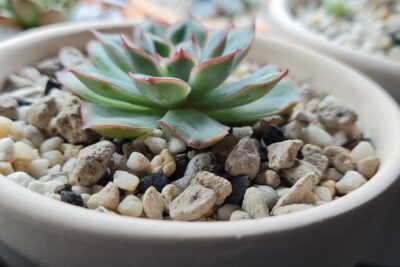
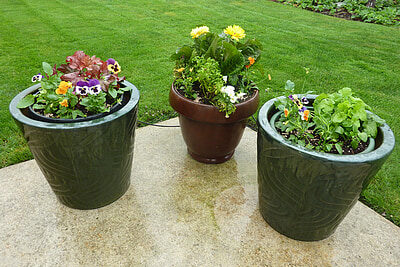


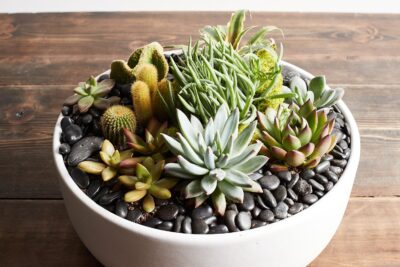
You Must Read